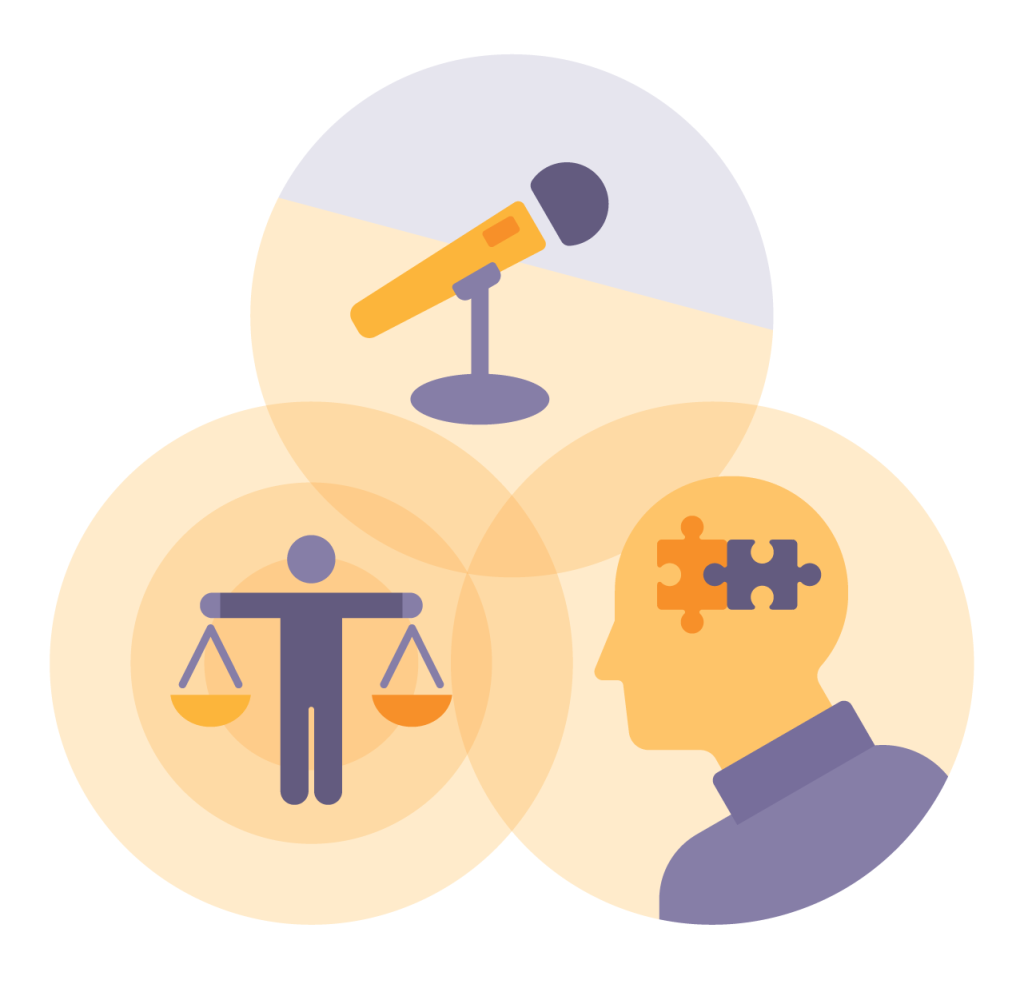83 Speaking Ethically and Avoiding Fallacies
eCampusOntario and Verna Johnson

When you think of persuasive speaking, you might think of sales pitches, political ads, or even propaganda. Sometimes persuasion is used unfairly, like when someone uses manipulation, deception, bribery, or pressure. These tactics are not only unethical, but they also damage your credibility.
Persuasion should never involve tricking or forcing your audience. Your job is to present clear, honest arguments that allow your audience to make informed decisions. When you speak ethically, you build credibility (ethos), your audience is more likely to trust and respect you, and your message becomes more substantial and persuasive. Even if someone disagrees with your point, they’ll be more open to listening if you’re respectful and honest.
Unethical Persuasion Tactics
The following are a few tactics to avoid:
- Manipulation: Twisting facts or playing on fears and insecurities to get your way, such as using guilt or fear instead of real evidence.
- Deception: Lying, hiding important facts, or giving only one side of the story to make your case stronger than it is.
- Bribery: Offering something in return for a favour or agreement. This breaks trust and fairness.
- Coercion: Forcing someone to act or agree through threats or pressure.
Using these methods may get short-term results, but they hurt your reputation and are inappropriate in professional communication.
Eleven Points for Speaking Ethically
In his book Ethics in Human Communication, Johannesen (1996) offers eleven points to consider when speaking to persuade.
- Do not use false, distorted, or irrelevant evidence.
- Do not use misleading or illogical reasoning.
- Don’t claim to be an expert if you’re not.
- Avoid emotional appeals that distract from the main issue.
- Don’t connect your message to emotional values if they’re unrelated.
- Don’t hide your true purpose, interests, or affiliations.
- Don’t hide the adverse effects of your proposal.
- Don’t use emotional appeals without evidence or logic.
- Avoid oversimplifying complex topics into “either-or” choices.
- Be honest about uncertainty—don’t pretend to be 100% sure when you aren’t.
- Don’t advocate for something you don’t believe in.
In short, speak with integrity. Respect your audience. Support your ideas with solid reasoning and evidence. Avoid stretching the truth to win an argument. Your credibility depends on it.
Avoiding Fallacies
A fallacy is a mistake in reasoning. It may sound convincing, but it is false logic. Fallacies can weaken your argument, damage credibility, and mislead your audience. Learn to recognize and avoid them. Listed below in Table 11.6 are eight common fallacies.
Table 11.6: Eight Fallacies
| Fallacy | Definition | Example |
|---|---|---|
| 1. Red Herring | A distraction from the real issue, often using fear. | “It’s not just about the death penalty—it’s about victims’ rights!” |
| 2. Straw Man | Misrepresenting an argument to make it easier to attack. | “So you’re saying we should let all criminals go free?” |
| 3. Begging the Question | Assuming the conclusion is true without proving it. | “We know they’ll commit more crimes if released.” |
| 4. Circular Reasoning | Repeating the same idea as proof. | “He’s dangerous because he’s always been dangerous.” |
| 5. Ad Populum (Bandwagon) | Claiming something is true because “everyone believes it.” | “Most people agree this is the best option, so it must be.” |
| 6. Ad Hominem | Attacking the person instead of the argument. | “He’s a liar and a cheat—don’t believe anything he says.” |
| 7. Non Sequitur | Making a conclusion that doesn’t logically follow. | “Anti-war protests led to more crime.” |
| 8. Post Hoc | Assuming cause just because one event followed another. | “Crime dropped after the new law, so it must be the reason.” |
Fallacies may seem persuasive on the surface, but they are weak arguments. Avoid using them, and watch out for them in others’ speeches.
A Simple Persuasive Structure
When time is short or the situation is high pressure, a simple five-step structure can help you stay focused:
- Get the audience’s attention
- Identify a problem or need
- Provide a solution
- Paint a clear vision of the benefits
- Call the audience to action
This structure keeps your presentation logical and organized while helping you avoid shortcuts like fallacies or emotional manipulation.
Attribution
This section contains material taken from Chapter 12.5 “Speaking Ethically and Avoiding Fallacies” in Introduction to Professional Communication and is used under a Creative Commons Attribution-NonCommercial-ShareAlike 4.0 International License.
References
References are at the end of this chapter.
Media Attributions
- C7_audiencecomplexity

